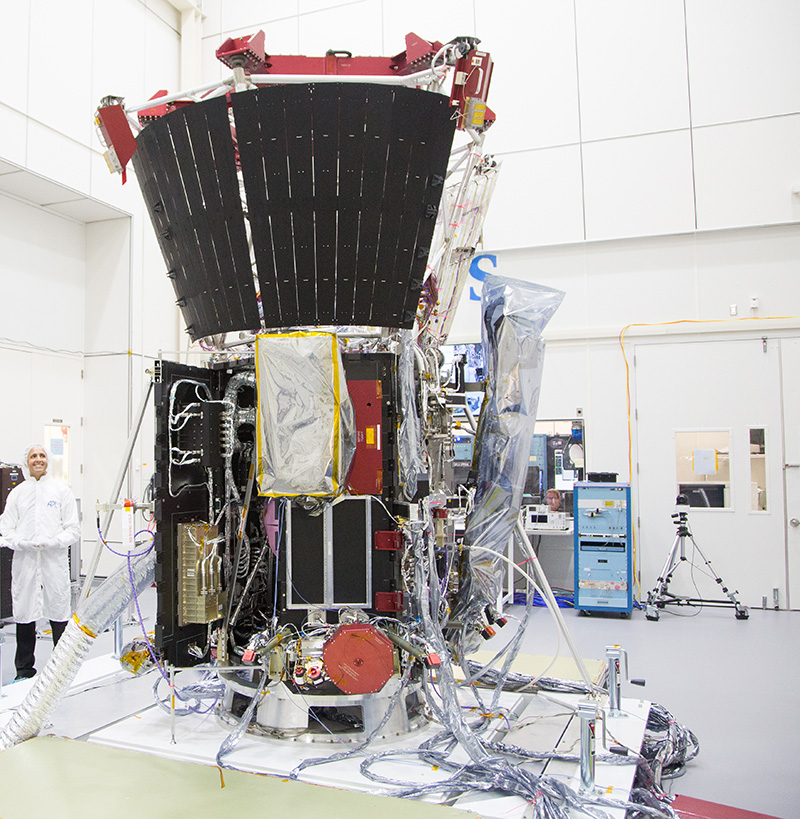News CenterNews Archive
Launch Memories
Posted on August 12, 2021
A Memorable Day for a Resilient Team
Nour Raouafi
Parker Solar Probe Project Scientist
Johns Hopkins Applied Physics Laboratory
March 31, 2018, was a memorable day in the lifetime of our mission to touch the Sun. It was the Pre-Shipment Review, where NASA would decide whether the team could ship the spacecraft to Cape Canaveral for the last phase of tests and integration before launch. Missing this critical milestone meant postponing launch – and the mission -- by at least a year. The team was working multiple shifts to meet a 2018 launch but it was fully energized by the mission's prospects: the closest flight to a star and exploring decades-long mysteries.
The mission systems engineer opened the review, with the conclusion was that the spacecraft was “red” – meaning we could not ship it to the Cape. The atmosphere was tense and stressful and I still remember every detail, down to where I was seated and what key team members were doing at the time. It was like an Olympic marathon runner being just a couple of yards from the finish line, then not crossing it.
The concern? The team had discovered a handful of failing thermal sensors on the spacecraft. While Parker Solar Probe carries dozens of these sensors, they are critical to mission safety – so failure of even a few sensors was not an option. Though the verdict was that the spacecraft was not ready for shipping, we proposed shipping to the Cape after all, and working out a solution there over the next couple of months – and if that didn’t work, we’d postpone the launch. NASA’s approval of our plan spoke to its trust in the entire Parker Solar Probe team. The levels of transparency and communication between all the parties involved -- NASA, Johns Hopkins Applied Physics Lab project management, spacecraft and science instrument teams -- were unparalleled.
We formed a Tiger team to solve the problem and over the following month and a half, another system of thermal sensors was installed, thoroughly tested, and deemed ready to go. We haven’t seen another failure since. We now have two systems on the spacecraft; we can use one, the other or both.
So March 31, 2018, was a memorable day in which the DNA of the Parker team was revealed. And more than three years later, I’m just as impressed by what this team continues to achieve.

Project Scientist Nour Raouafi checks out the developing Parker Solar Probe spacecraft in a Johns Hopkins Applied Physics Lab clean room in 2017.
- The Promise of Parker
- A Team that Inspires
- Shaping a Mission
- The People Behind the Mission
- Designing an Instrument
- A Memorable Day for a Resilient Team
- Through the Camera's Eye
- Seeing Was Believing
- The First Maneuver
- A Transformative Mission
- My Parker Solar Probe 'Family'
- Sharing the Parker Story
- 'Growing Up' with Parker Solar Probe